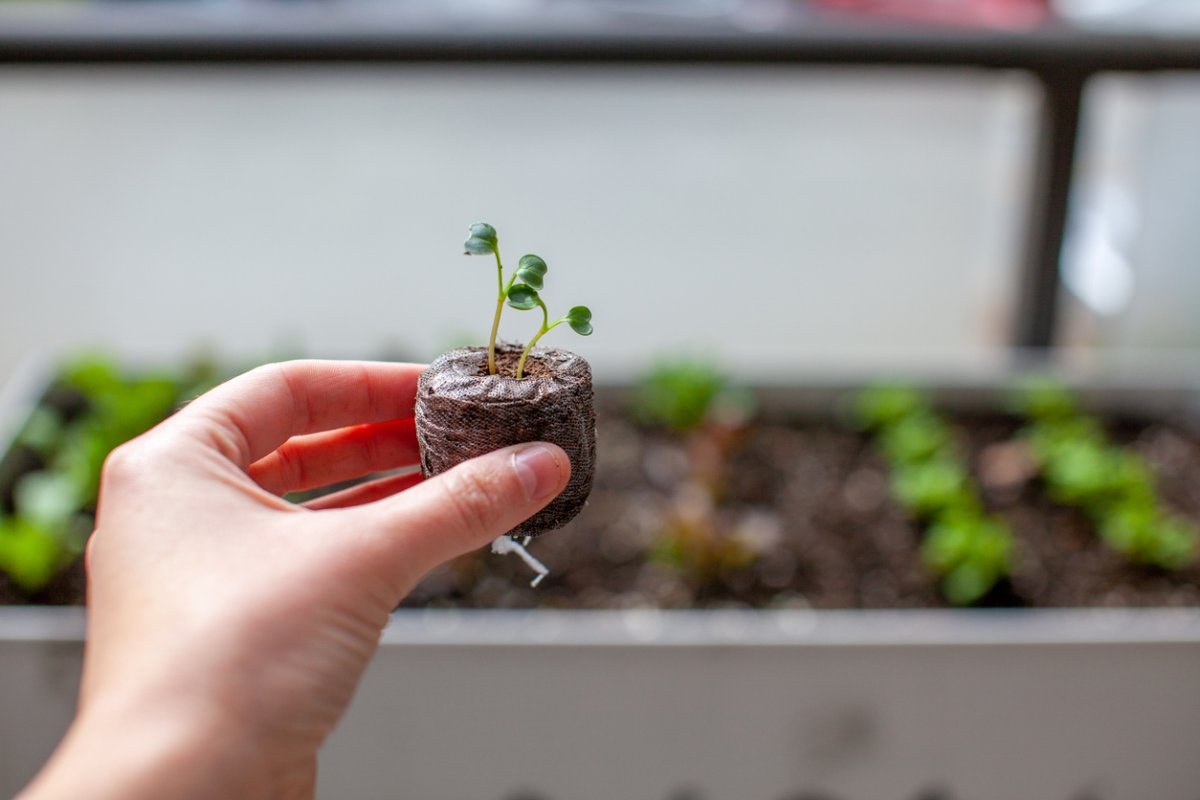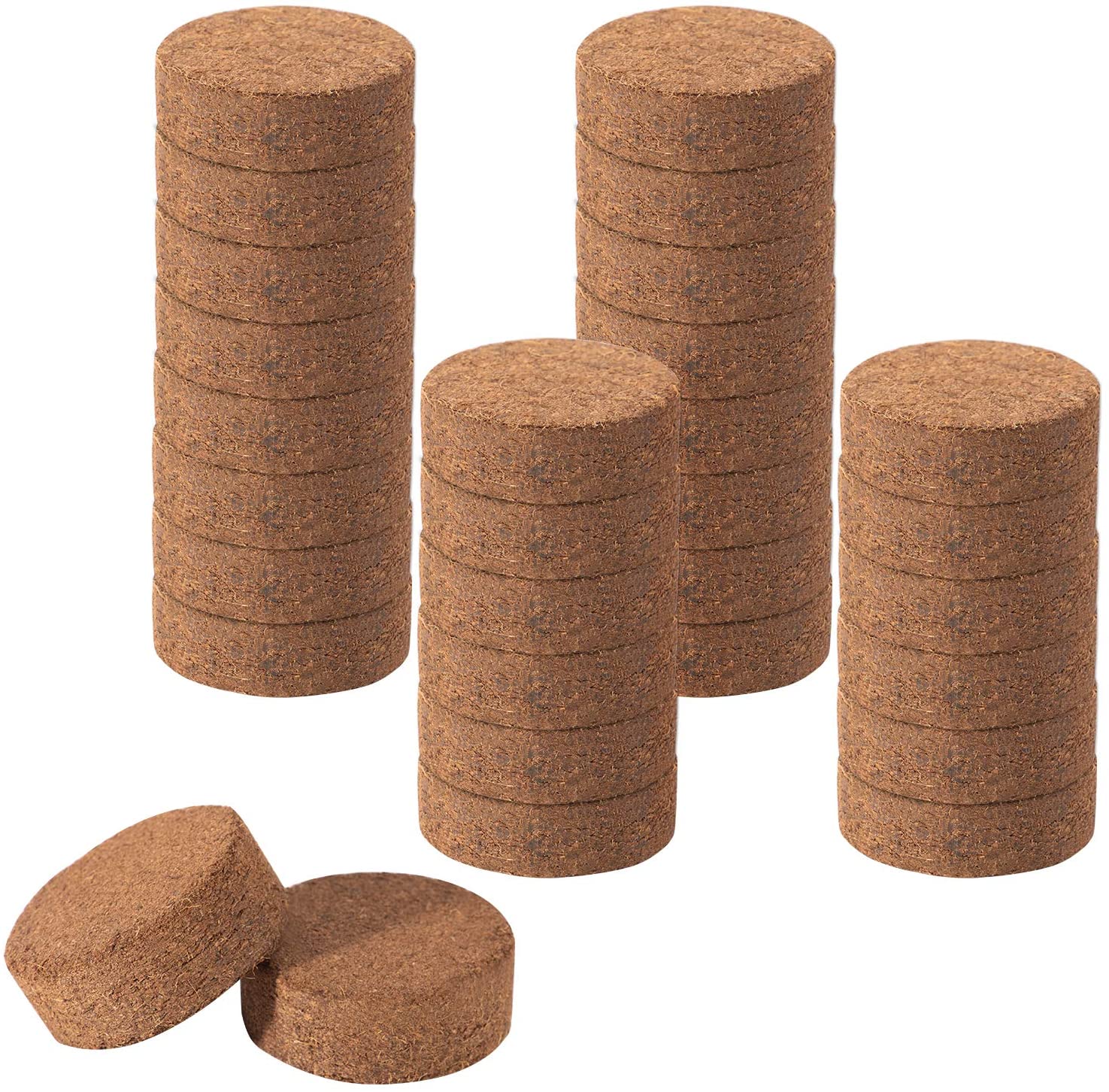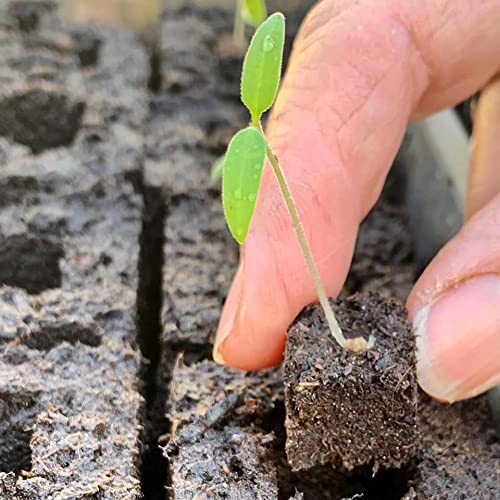

We may earn revenue from the products available on this page and participate in affiliate programs. Learn More ›
Peat moss has been a top growing medium, especially for starting seeds, since the 1960s. Compressed pellets of peat moss surrounded by a thin fiber bag, like those made by Jiffy, offer a convenient, mess-free, and effective method for starting plants from seed to grow in a vegetable garden or flower beds. But peat is not a sustainable product in the long run, and harvesting the material for horticultural use has come under fire because of declining peatlands.
Like other fossil fuels, peat takes centuries to form naturally from vegetative debris in wetlands. Sphagnum peat moss, the type compressed into seed-starting pellets and for most horticultural uses, grows on the surface of the peatland and is lighter and airier, retaining water and aerating roots.
The very nature of peat that leads to its popularity as a soilless seed starter also makes it a critical part of ecosystems. Peat grows in bogs and serves as a sponge of sorts to slow water and prevent flooding in these areas.
Peat and the environment
Increased use of peat in soilless methods like hydroponics has led to more sales of the medium for its water-retaining properties. The number of home vegetable garden growers is on the rise, as is the number of cannabis growers worldwide relying on peat moss. Production of peat in Canada alone averaged more than 1.34 million tons a year from 2014 to 2018.
Harvesting and transporting peat also adds to its eco-footprint. Most U.S.-sold peat comes from Canada, so the distance is not great. The country’s peatlands are protected by federal government policy. Plus, all products consumers buy carry some environmental footprint for manufacturing, packaging, and transporting.
Although the Canadian peat moss in seed pellets and other uses is harvested sustainably through efforts like ensuring the peatland is large enough and the peat layer deep enough to warrant harvest, peat is still a finite resource. Peat strip mining is causing extensive environmental impact and affecting cultural resources near peatlands. This has led to numerous regulations aimed at controlling peat use and harvesting. A U.K. law passed in 2011 has set timetables for the eventual banning of peat in horticultural products.
How about those seed starters?

The U.K. timeline is behind schedule, and one reason might be a lack of a clear alternative growing media. Coconut coir, a more sustainable byproduct of the food industry (from coconut outer husks) is a favored alternative, with a neutral pH and excellent air and moisture properties.
Although compressed peat pellets have drawbacks beyond their effect on peatlands, they still work well for starting seeds. Home gardeners who might lack seed-starting savvy, and certainly time, appreciate the convenience.
Still, peat moss is not perfect. It’s more acidic than some alternative media, and if the expanded pellets dry out completely, it is tough to bring them back to a fully moistened state. Plus, peat plugs are too small to sustain seedlings until they’re ready to plant, so eventually the seedlings must be potted up. Pellets can cost more than other methods, but they offer the convenience of a quick and clean seed-sowing experience, especially when sold with a tray and lid.
Moving to more sustainable seed starting

Gardeners who already have peat pellets handy should use them if they like how they work. Coconut coir pellets offer similar convenience and a more eco-friendly approach for starting seeds. A sterile potting mix made for seed starting offers the best results for most growers, but it also requires investing in a tray and new (or cleaned) small plastic or biodegradable pots or a soil block maker for those who want to start a large quantity of seeds and avoid use of pots. Filling a grow tray or pots directly with soil is an inexpensive approach for many gardeners, but can get messy.
Growers should be especially aware of information on any product they try. It’s also helpful to study up on how any new medium differs. It might require adjusting watering, for example.
The best way to transition from less sustainable peat pellets to a new way of starting seeds is to phase the plugs out gradually and double up. For example, gardeners wanting to start two tomato plants should start a few seeds in pellets and a few in the new medium the first time around until they learn the nuances of a new method. Finally, learning to compost is a highly sustainable alternative to peat as an outdoor soil amendment.
